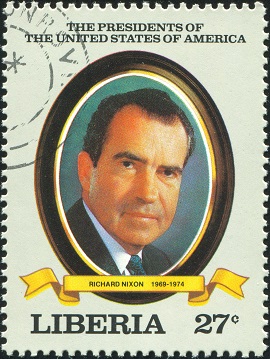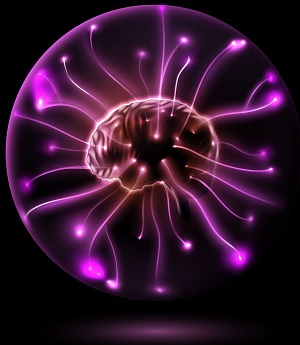11 Feb Conscious Sensibility
Watergate Revisited
 More than one President of the United States has been asked this question: “What happened, and how soon did you know about it?” Many cognitive psychologists perform experiments in which they ask subjects (people) the same question, seeking to mark the boundaries between conscious and unconscious phenomena. I recently spoke of mindfulness. Wakefulness may be a continuum in which mindfulness is at the pinnacle, and subconscious near the bottom, with passive consciousness in the middle. Conscious sensibility of our surroundings begins before birth. Even in the womb, fetuses respond to stimuli. What occurs in the brain to make this possible?
More than one President of the United States has been asked this question: “What happened, and how soon did you know about it?” Many cognitive psychologists perform experiments in which they ask subjects (people) the same question, seeking to mark the boundaries between conscious and unconscious phenomena. I recently spoke of mindfulness. Wakefulness may be a continuum in which mindfulness is at the pinnacle, and subconscious near the bottom, with passive consciousness in the middle. Conscious sensibility of our surroundings begins before birth. Even in the womb, fetuses respond to stimuli. What occurs in the brain to make this possible?
We now have a fairly clear picture of what happens in the brain in the perceptual centers as we discover what is happening through our senses and kinesthetic awareness. Many of the microscopic interactions between neurons and many of the macroscopic interactions between areas of the brain throughout perception are relatively well understood (Dennett 1991). Where in the brain recognition actually clicks is less clearly understood simply because the resolution of our imaging and measuring devices is not fine enough to monitor every single neuron in the brain discretely. How soon we “know” about something is the key question of consciousness.
| Understanding Context Cross-Reference |
|---|
| Click on these Links to other posts and glossary/bibliography references |
|
|
|
| Prior Post | Next Post |
| Seeing Within: Proprioception for Robots | Introspection as Empirical Science |
| Definitions | References |
| consciousness subconscious | James 1890 |
| understanding mind | Dennett 1991 |
| perception kinesthesia | Zimmer in National Geographic |
Processes in the brain that do not immediately bubble up to the surface of our psyche can be described as unconscious. In this post and a couple to follow, we briefly explore answers to the “how-soon-did-you-know- about-it” question.
 David Eagleman suggests that there is so much going on in there, that our brain is like a nation or a newspaper: “Your conscious mind is that newspaper. Your brain buzzes with activity around the clock, and, just like the nation, almost everything transpires locally: small groups are constantly making decisions and sending out messages to other groups. Out of these local interactions emerge larger coalitions. By the time you read a mental headline, the important action has already transpired, the deals are done. You have surprisingly little access to what happened behind the scenes. Entire political movements gain ground-up support and become unstoppable before you ever catch wind of them as a feeling or an intuition or a thought that strikes you. You’re the last one to hear the information. However, you’re an odd kind of newspaper reader, reading the headline and taking credit for the idea as though you thought of it first. You gleefully say, “I just thought of something!”, when in fact your brain performed an enormous amount of work before your moment of genius struck. When an idea is served up from behind the scenes, your neural circuitry has been working on it for hours or days or years, consolidating information and trying out new combinations. But you take credit without further wonderment at the vast, hidden machinery behind the scenes” (Eagleman 2012).
David Eagleman suggests that there is so much going on in there, that our brain is like a nation or a newspaper: “Your conscious mind is that newspaper. Your brain buzzes with activity around the clock, and, just like the nation, almost everything transpires locally: small groups are constantly making decisions and sending out messages to other groups. Out of these local interactions emerge larger coalitions. By the time you read a mental headline, the important action has already transpired, the deals are done. You have surprisingly little access to what happened behind the scenes. Entire political movements gain ground-up support and become unstoppable before you ever catch wind of them as a feeling or an intuition or a thought that strikes you. You’re the last one to hear the information. However, you’re an odd kind of newspaper reader, reading the headline and taking credit for the idea as though you thought of it first. You gleefully say, “I just thought of something!”, when in fact your brain performed an enormous amount of work before your moment of genius struck. When an idea is served up from behind the scenes, your neural circuitry has been working on it for hours or days or years, consolidating information and trying out new combinations. But you take credit without further wonderment at the vast, hidden machinery behind the scenes” (Eagleman 2012).
Conscious vs. Unconscious
 Behavioral psychology seeks to describe what we do and why we do it based on psychological conditions, input stimuli, and other factors. The internal processes or functioning of the brain or mind are not part of the behavioral psychology question, because those internal processes are fundamentally unconscious. In other words, the person who has the brain that is doing the work has no way of identifying the specific processes or brain components involved.
Behavioral psychology seeks to describe what we do and why we do it based on psychological conditions, input stimuli, and other factors. The internal processes or functioning of the brain or mind are not part of the behavioral psychology question, because those internal processes are fundamentally unconscious. In other words, the person who has the brain that is doing the work has no way of identifying the specific processes or brain components involved.
Cognitive science seeks to integrate our knowledge about behavior and the psychology of thought and feeling, both conscious and unconscious, with our knowledge about the physical mechanisms of thought and feeling.
A thought can be compared to a bubble and consciousness to the surface of a glass. The processes inside the glass (brain) are not consciously perceived until they bubble up to the top. The math of bubbling up at the discrete synapse level is consistent: once excitation reaches threshold, the synapse fires. Depolarized nerve fibers propagate the excitation to other neurons until a sufficient mass of excited neurons is reached. The mass forms the bubble. But then what?
The Flux of Consciousness
Philosophers, psychologists and neurologists have long debated the nature of consciousness, a phenomenon of temporal activity often characterized by fluctuations in the frequency and amplitude of brain activity. Some researchers use comparisons in the levels of activity associated with arousal as a way of analyzing the nature of consciousness.
William James suggested that human consciousness flows like a stream, in Principles of Psychology. James’ “stream of thought” is governed by five characteristics (quoting):
- Every thought tends to be part of a personal consciousness.
- Within each personal consciousness thought is always changing.
- Within each personal consciousness thought is sensibly continuous.
- It always appears to deal with objects independent of itself.
- It is interested in some parts of these objects to the exclusion of others”.
Many of the arguments in the current debate about the nature of consciousness seem shallow in that they rarely mention organs in the body other than the brain. Even the sensory organs, usually associated very closely with the brain, seldom enter the discussion. But what if the brain is only part of the mechanism of cognition, as proposed in earlier posts? If so, wouldn’t the brain comprise only part of the mechanism of consciousness as well? Would proprioception, introception and exteroception be partners in the process?
 High-resolution measuring and imaging systems such as Magnetic Resonance Imaging (MRI), Computerized Tomography (CT or CAT) scans and new higher resolution approaches let us examine brain states. These images produce snapshots of brain activity at a certain point in time. Although the resolution and coverage of these systems falls short of conclusive evidence, the consistency in the differences between images of wakeful and sleeping brains is generally clear enough that these sources can be considered strong indicators that clear differences exist.
High-resolution measuring and imaging systems such as Magnetic Resonance Imaging (MRI), Computerized Tomography (CT or CAT) scans and new higher resolution approaches let us examine brain states. These images produce snapshots of brain activity at a certain point in time. Although the resolution and coverage of these systems falls short of conclusive evidence, the consistency in the differences between images of wakeful and sleeping brains is generally clear enough that these sources can be considered strong indicators that clear differences exist.
“Experience is never limited, and it is never complete; it is an immense sensibility, a kind of huge spiderweb of the finest silken threads suspended in the chamber of consciousness…” (James, 1890)
| Click below to look in each Understanding Context section |
|---|








